Q&A: How to spot childhood trauma and vicarious trauma
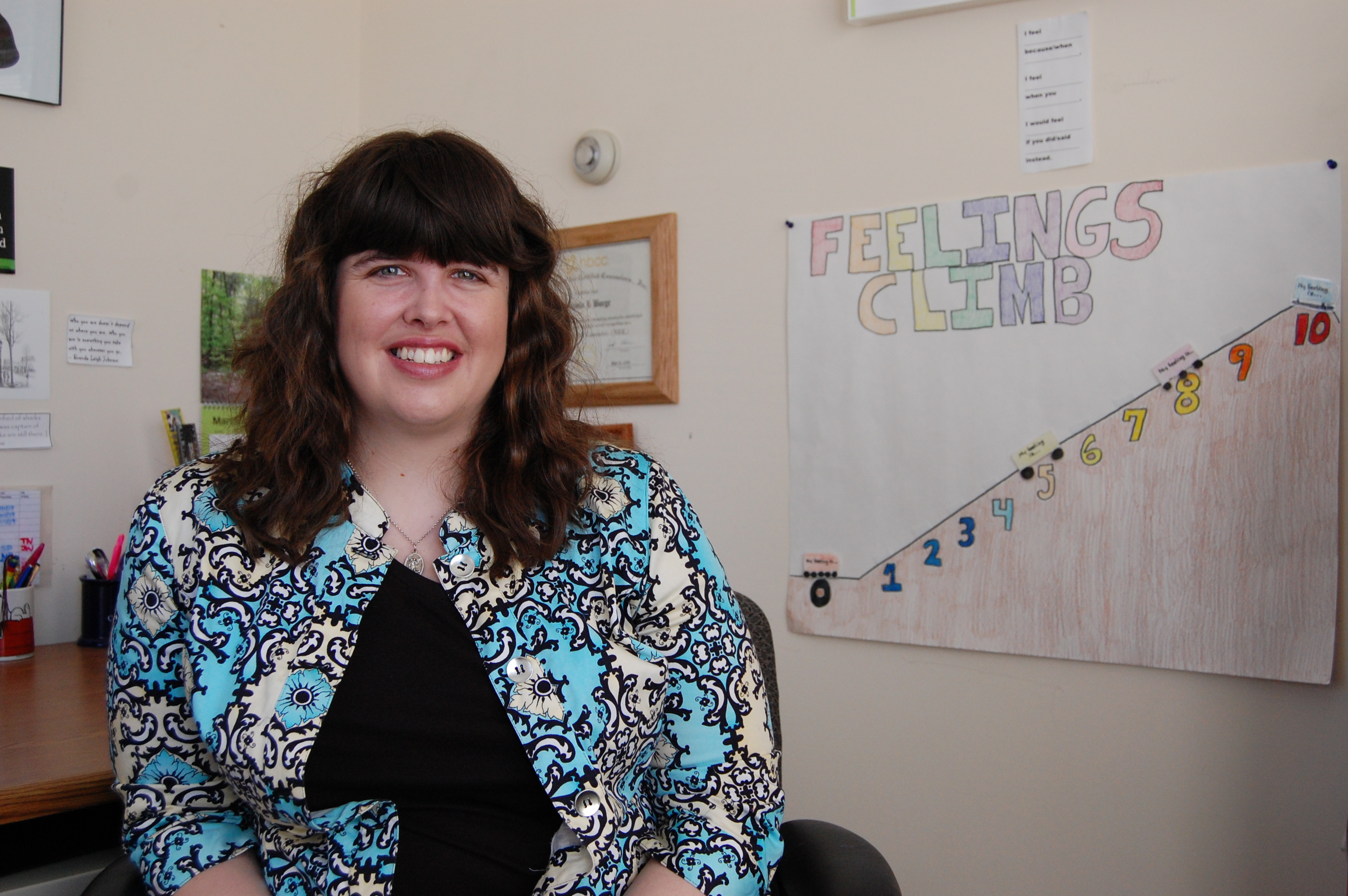 As a therapist who counsels children recovering from sexual abuse and other traumas, Melissa Boege hears terrible things every day.
As a therapist who counsels children recovering from sexual abuse and other traumas, Melissa Boege hears terrible things every day.
“It’s really difficult to not take it home with you,” she said.
But Boege, who works at Catholic Charities, Diocese of Trenton’s Family Growth program in Red Bank, strives to avoid the “vicarious trauma” that can afflict counselors and others, like police and doctors, who interact daily with victims of traumas and tragedies.
This summer, she’ll hit the road to teach others how to reduce their risk of burnout, secondary victimization, and compassion fatigue. She will present a workshop called “How to Keep Your Stars from Losing their Shine: Reducing Vicarious Trauma at the CAC” at the annual National Children’s Alliance Leadership Conference in June in Washington, D.C.
CAC stands for Child Advocacy Center; many counties have them within their prosecutors’ offices. It’s essentially a one-stop shop model of children’s support services, intended to minimize the inconvenience and stress for children recovering from trauma who must navigate the court system.
We sat down with Boege to talk about childhood trauma and vicarious trauma, and the signs of both.
A trauma Q&A
Q: What exactly is childhood trauma?
A: Most commonly, when people hear trauma, they think about veterans coming back from active duty, or physical abuse or sexual abuse. But we now know, thanks to research, that trauma really can be anything. It can be a kid who was in or witnessed a car accident, a kid who lost a loved one in a tragic or sudden way, or even a kid who was bitten by a dog. Childhood trauma can be anything that disrupts your normal functioning and goes beyond what you can handle with the resources that you typically use to address negativity and challenges.
Q: Are there things that are considered “childhood trauma” that might surprise people?
A: Yes – things like a separation from parents, maybe having an impaired caregiver, or something going on in the house that might not be violence but that disrupts a child’s day-to-day functioning.
Q: Like divorce, poverty, or illegal drug use in the household?
A: Absolutely.
Q: What exactly do you do?
A: My primary role is as a therapist, so I work with kids, teenagers, and adults who have been through trauma. When we started, we were known for sexual abuse treatment, but as we’ve become more connected with the Monmouth County Child Advocacy Center, the Division of Child Protection and Permanency, and the Multi-Disciplinary Team, we’ve gotten more referrals for all kinds of trauma. That means physical abuse, domestic violence, and traumatic loss cases.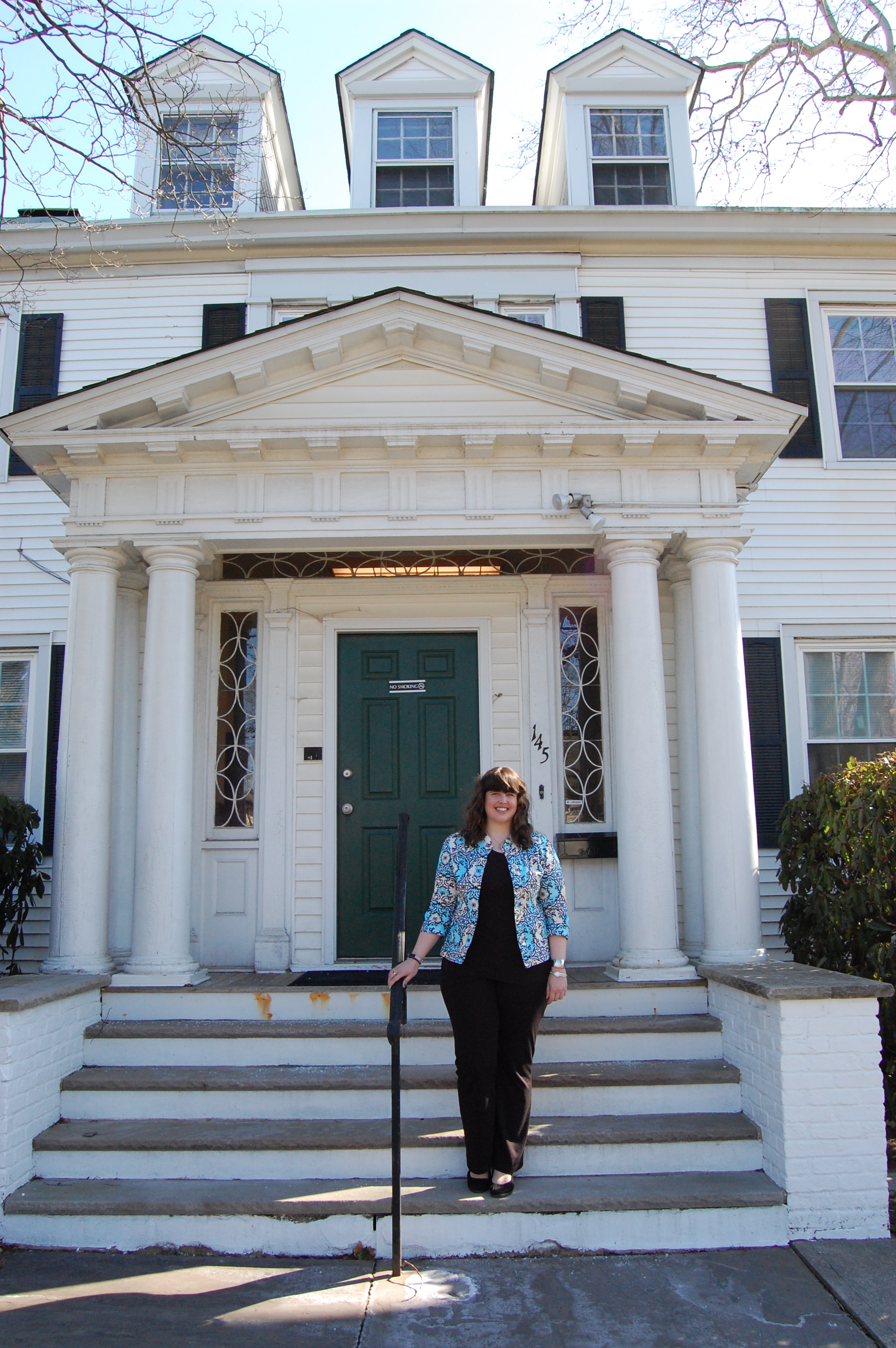
Coping skills key
Q: How do you treat childhood trauma?
A: Most of our staff is certified in trauma-focused, cognitive behavioral therapy. That’s an evidence-based treatment model for kids and teenagers who have been through trauma. It’s one of the most rigorously tested treatments for kids with post-traumatic stress disorder symptoms. In the simplest terms, the first part of treatment gives kids coping skills around trauma. Kids don’t necessarily have to come in and start talking right away about what happened, but we gradually work our way up to that. After they have coping skills and tools, kids create what’s called a trauma narrative where they talk about the trauma in a lot of detail. Hopefully, they have a supportive caregiver they can share that with. We also work on things like safety and gradual exposure if a kid is avoiding visual reminders or triggers.
Q: What are some coping skills you teach children recovering from trauma?
A: We teach kids that trauma can have physical effects, like when their heart starts beating fast or their stomach aches. Deep breathing and progressive muscle relaxation help with those physical effects of trauma. We also talk about feelings, expression, and identification. Depending on their age, sometimes kids need to develop a “feelings vocabulary” that they can share with others. We do cognitive coping too, talking about the difference between thoughts, feelings and behaviors, and how they all inform one another.
Warning signs
Q: How common is childhood trauma?
A: It’s underreported, so it’s hard to measure. There’s so much secrecy especially around sexual abuse. It also can also go unnoticed by teachers and medical professionals who mistake PTSD symptoms for learning disorders like Attention Deficit and Hyperactivity Disorder (ADHD), because a child might look like they’re having trouble focusing or are overly hyper or overly stimulated, when the roots of that aren’t necessarily in inattention or impulsivity, but trauma. And delayed disclosure is pretty common among kids and teenagers, so that makes childhood trauma hard to quantify too. I do think the Me Too movement has given people the courage to speak up, or recognize that what happened to them was abuse.
Q: What are some red flags that might signal a child has experienced trauma?
A: If you see behavior changes, especially things like moving backward from developmental milestones – for example, if a child was sleeping through the night, but now they’re having trouble again sleeping through the night or having nightmares. Some kids might seem irritable or display symptoms of depression or anxiety. They might have trouble enjoying things they used to enjoy or lose interest in activities or spending time with family or friends. A red flag that can be specific to PTSD is re-experiencing symptoms – flashbacks or vivid nightmares in which they feel like they’re back at the time when the trauma happened. Sometimes that’s difficult for kids to explain, because they don’t necessarily know what a flashback is so they might not be able to describe what’s going on in words that are going to make sense to adults. Hyper-arousal is another red flag – that’s when a kid is always afraid that something is going to happen or always on edge.
Lifelong impact
Q: What happens if childhood trauma never gets treated?
A: Kids might have trouble connecting with others, expressing their feelings, or just being able to function in other parts of their lives – home, school, work – if they haven’t processed the trauma or developed coping tools. And childhood trauma can have lifelong impact. Research, particularly the ACE study, shows that if trauma isn’t addressed in childhood, it can have profound effects on health into adulthood. So that’s one of our goals: Providing treatment to kids immediately after a trauma happens or in an appropriate timeframe after, so they’re able to get the tools and the resources they need to process and build resilience before it festers and leads to adult challenges.
Q: How is the Family Growth program unique in its field?
A: There are a lot of counselors and options for therapy in this area, and everybody brings something to the table. But for us specifically, 90 percent or more of our caseloads are trauma cases. Everyone here has sex-abuse-specific and trauma-specific training. Being trauma-informed as an agency means that everybody in the building, from the clinicians to our administrative people, has some knowledge and awareness of trauma and how it might impact someone coming in. So for example, someone who’s always late for appointments: Instead of complaining that that person is disorganized, being trauma-informed is recognizing that this person is coping with a lot and the lateness is a symptom of a larger problem. Being trauma-informed also is an understanding that trauma looks different for different people.
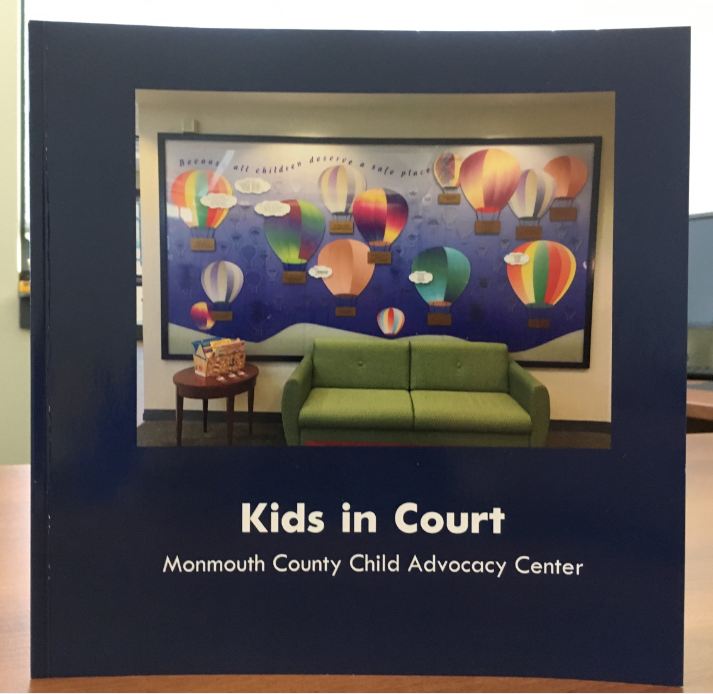 Q: You work closely with the courts, treating children whose caregivers are prosecuted for abuse or neglect. How does that inform your treatment?
Q: You work closely with the courts, treating children whose caregivers are prosecuted for abuse or neglect. How does that inform your treatment?
A: Going through court can be intimidating for a kid. In Monmouth County, though, there’s definitely a lot of support around it. The victim witness advocates and the CAC team really work to make the child as comfortable as possible.
Books and puppies
Q: One way you’ve done that is to create a children’s book last year to ease kids’ fears about court and explain the legal process. What’s the story behind that?
A: That came out of a discussion I was having with victim witness advocates at the CAC. We use so many books as resources but there wasn’t a book available that walked kids through the process of going to court. So I wrote a story called ‘Kids in Court,’ filled it with photos of what the kids will see in court, and had it printed through Shutterfly. We keep it at the CAC for kids to read.
Q: How else do you ease the nerves of children reluctant to open up to you?
A: We will be getting therapy dog – probably a Labrador or golden retriever. We’re on the waiting list with Canine Companions for Independence, which trains service dogs and connects them with individuals who have physical limitations and organizations that work with individuals where a facility dog would be helpful, like mental health facilities or CACs. Our facility dog will come to work with me on daily basis and take an active role in therapy. It won’t be just cuddling, although that is an important piece. The dog will also help teach relaxation skills and mindfulness – the whole idea of: ‘The dog is present now. The dog isn’t thinking about the past or future.’ We can also use the dog as a tool to help kids share their feelings – ‘How do you think the dog would feel?
The risk of vicarious trauma
Q: It sounds like this dog is needed as much for the staff as for the children they counsel, because this kind of work surely takes a toll on counselors.
A: Absolutely. Vicarious trauma and burnout are something we talk about a lot. Vicarious trauma is trauma you haven’t experienced personally, but in helping someone else who has, you begin to take on some of their trauma as your own and experience symptoms as a result of hearing and carrying other people’s trauma. With professionals in this field, that’s a huge risk. With the stories we hear every day, it’s really difficult to not take it home with you.
Q: What are some signs that someone is experiencing vicarious trauma?
A: People might find themselves being more cynical than they usually are. There could be a loss of motivation at work. There could be physical symptoms, like they might not have as much energy or be as engaged or able to focus as much as they used to be.
Q: How do you heal from vicarious trauma?
A: I developed a plan for the CAC to implement for 2019. The CAC’s multi-disciplinary team meets twice a month. Our meetings can be pretty heavy meetings, with what’s being discussed. So once a month, we’ll start sharing success stories to lighten the load and focus on the end result and the positive effects our treatment and support have on families. We also plan to do quarterly lunches and biannual workshops that will include self-care activities like Zumba and yoga.
Q: What happens if vicarious trauma gets ignored?
A: Ultimately, people could leave their job or the profession altogether. Even if they’re not leaving the job, they might feel like they’re losing their effectiveness, or their overall functioning could be impacted, if they’re taking the job home with them. But there are lots of personal steps people can take to build resiliency – stepping away from emails and calls and being fully ‘off’ when you’re off the clock; establishing an exercise routine; spending time on hobbies or with family and friends; or even just getting outside during the work day for a walk. It’s making time for ‘Me Time.’
Helping victims
Q: How did you get into this work?
A: I was always interested in doing something that combined criminal justice and psychology. I was a Police Explorer in high school and early college. That’s a career training program for teenagers interested in law enforcement. My uncle has been a police officer for years, and I also have cousins in law enforcement. As an undergrad, I studied psychology and social/real science. I also did a college self-defense class that taught me about victimology. After I got a master’s degree in mental health counseling, I interned at Catholic Charities’ Family Growth program in 2013. And I just never left!
For more information: Melissa Boege, Family Growth program, (732) 747-9660 ext. 7101;
To subscribe to our blog posts and news releases, fill out the fields below.


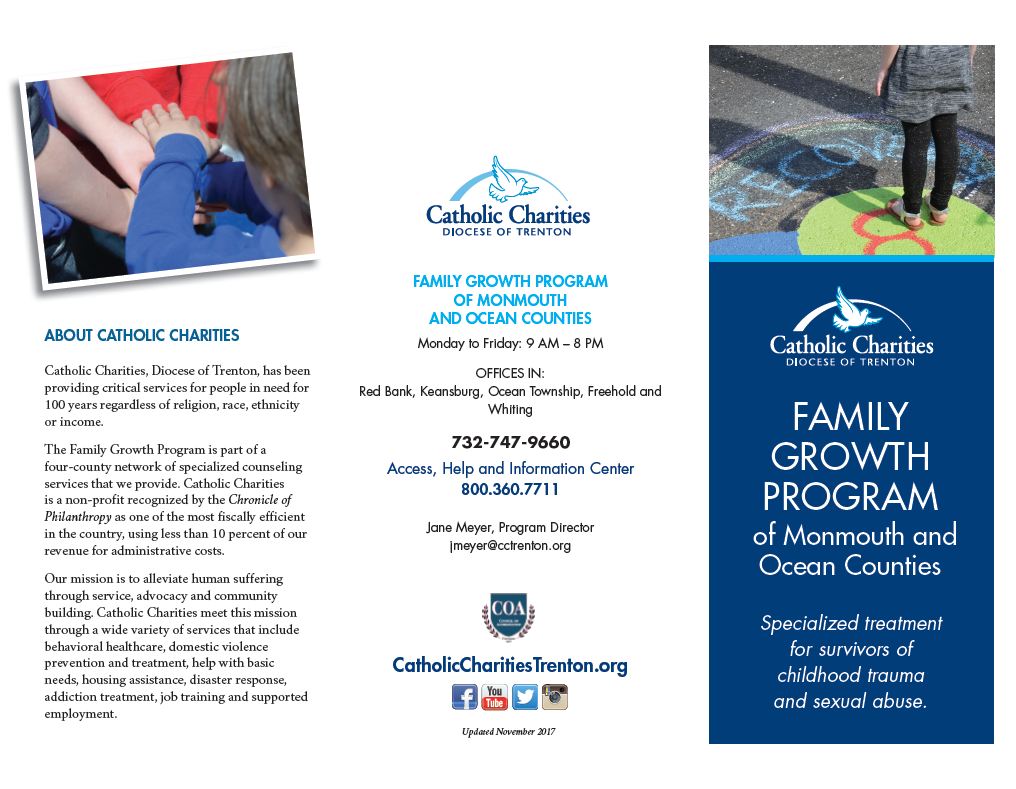
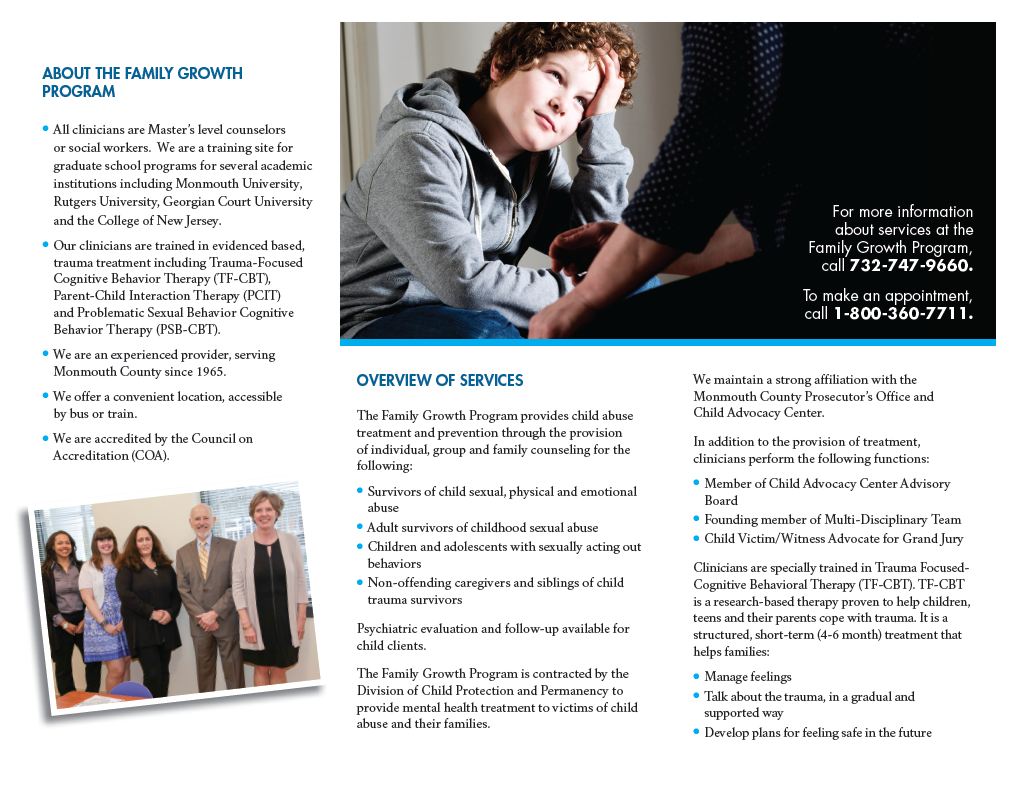
Meet Surf! New facility dog comforts kids in crisis - - October 31, 2019, 12:48 pm
[…] To learn more about the work of our Family Growth Program in Red Bank, read this Q&A here. […]
After decades of helping abused children heal, a longtime advocate retires - January 13, 2021, 10:20 am
[…] Because childhood trauma can have lifelong impact, Meyer’s work has had a transformative impact for countless families, Catholic Charities Executive Director Marlene Laó-Collins said. […]